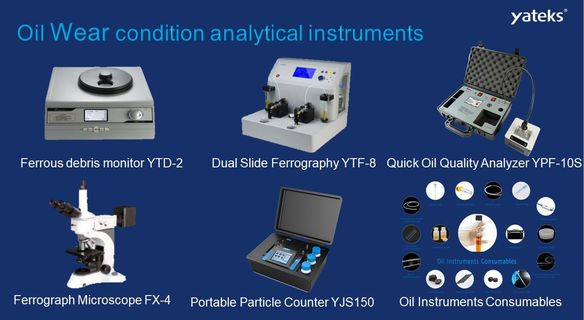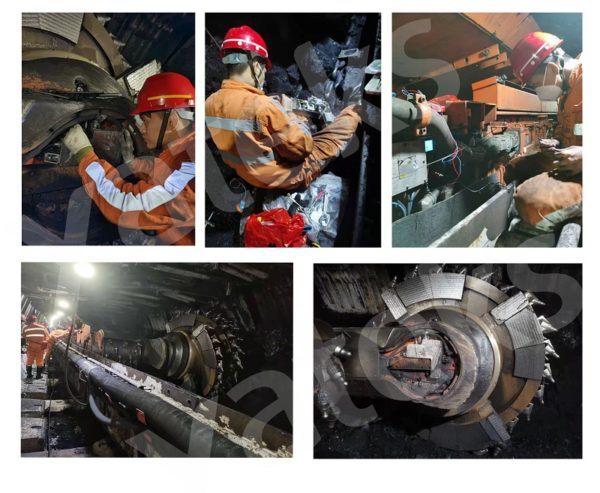With the increasing development of machinery and equipment in the direction of heavy-duty, high-speed, large-scale, automation, multi-function, and high-efficiency use, the maintenance cost and downtime loss of the equipment have increased sharply. Therefore, the requirements for reliability and economy of equipment operation are relatively high. This requires companies to rely on equipment condition monitoring equipment to improve work efficiency and save costs.
The use conditions of machinery and equipment of coal mining enterprises are bad, and the machinery and equipment are seriously damaged. For normal production and safety, it is necessary to establish a complete monitoring system. To improve the equipment intact rate, reduce unnecessary investment. Especially sometimes the monitoring is not in place, small accidents turn into big accidents, and the loss is huge. Coal mining enterprises should do the following 3 tasks to establish an oil monitoring system:
(1) Equipped with various oil inspection instruments and equipment of high quality and complete functions, with the characteristics of a large number of inspection items, a large number, and a fast speed, providing accurate and timely data for rapid fault diagnosis. In addition to the emission spectroscopy, infrared spectroscopy, ferrograph, particle counting, and other wear and pollution particle monitoring instruments, the hardware facilities also need to be equipped with viscosity, flash point, moisture, total acid value, total base value, pour point, foam, insoluble matter, 10 kinds of conventional oil detection methods including mechanical impurities. In terms of software: First, establish a laboratory and monitoring data local area network, and transmit the monitoring data of major equipment such as coal shearers, conveyors, main fans, air compressors, and oil testing data to the Electrical and Mechanical Services Department, so that corresponding measures can be taken. , Establish a fully functional database management system and report generation system, and generate oil monitoring reports in various formats. Third, establish a computer intelligent diagnosis system based on expert knowledge to improve the accuracy and scientificity of judging problems.
(2) It should have the testing capabilities that meet the requirements of the norms and standards, and ensure that the test results are sufficiently accurate. Considering the economy, the best monitoring results can be achieved with the least testing items. For testing methods that have national standards and international standards such as ISO and ASTM, they should Testing is carried out in strict accordance with standard methods to ensure the rationality and fairness of monitoring and diagnosis conclusions.
(3) A high-quality and high-level expert oil monitoring technical team with rich experience should be established. Through cooperation with colleges and universities and scientific research institutes, we cultivate monitoring personnel who have a solid theoretical foundation and practical experience in oil monitoring and diagnosis and continue to play the technical value of professionals in the process of solving practical problems.
According to the different failure modes of the equipment, different methods can be used to repair the equipment. The main maintenance methods include regular maintenance, post-maintenance, and predictive maintenance. Regular maintenance is preventive maintenance. It is required that after the equipment runs for the specified time, no matter what the condition of the equipment, the inspection, and repair of the specified content shall be carried out to eliminate the hidden dangers of the equipment. This method is extremely common in the repair of fully mechanized mining equipment in coal mines. It requires regular maintenance and replacement, and the cost is relatively high. Post-repair is the repair performed after a failure occurs. When a series of failures are caused by the failure to discover and deal with local failures in time, post-repair must be performed, which is costly and affects normal production. Predictive maintenance is based on the condition monitoring of operating equipment. When it is predicted that a certain part may malfunction, the hidden troubles of failure can be eliminated by timely targeted maintenance. Therefore, predictive maintenance is the most ideal maintenance method.
Starting from oil monitoring for mechanical equipment fault diagnosis, the cause and location of the fault can be predicted more accurately, the operation of the equipment can be monitored more comprehensively, and the early prediction can be used to detect and eliminate the hidden dangers of the equipment in time to reduce losses. After more than ten years of development, oil monitoring technology has become an important technical method for tribological monitoring and fault diagnosis


